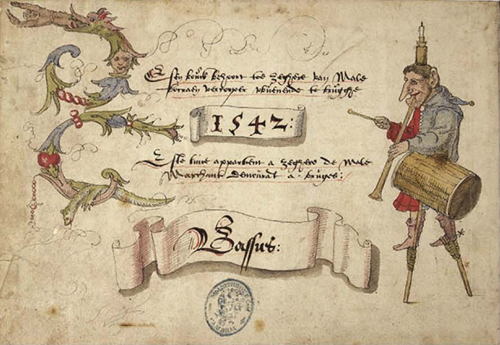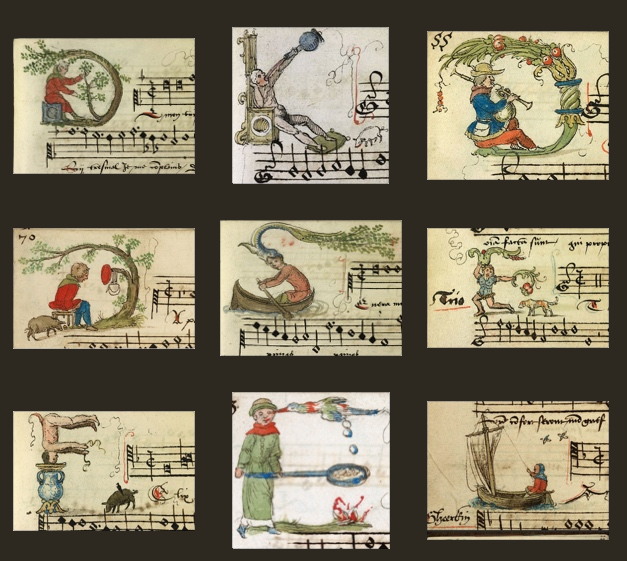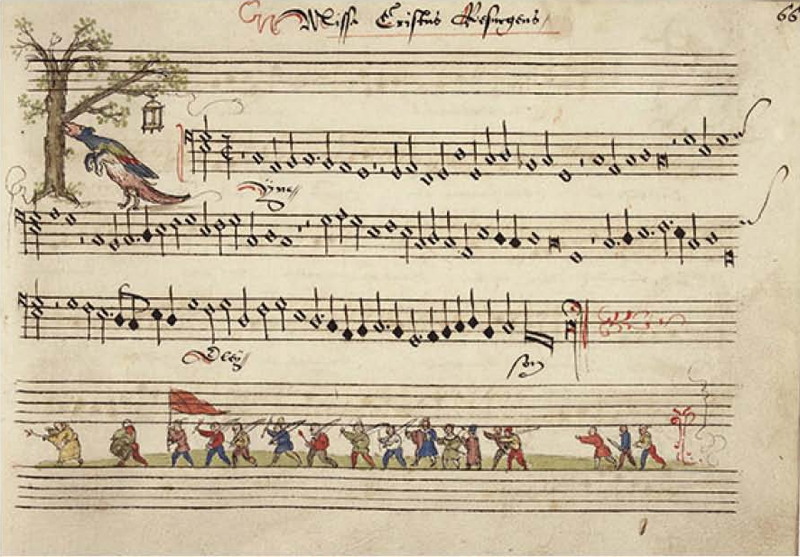| Faksimile-Edition
Rara. Stuttgart, 2018. Oblong, 28 x 20 cm. 4 partbooks, 1224 pp.
The Songbook of Zeghere van Male, also known by its call number MS 125-128 in Cambrai's Mediathèque Municipale, consists of four complementary part-books: Superius, Altus, Tenor, & Bass. The chansonnier became part of this public collection after the French Revolution, beforehand it was in the Bibliothèque de Saint-Sépulcre, also in Cambrai.
The MS contains 229 compositions, extremely varied, some of them present only in this source. The special aspect of this manuscript is its marriage of music, art and culture: drawings adorn each folio. Executed by quill and with lively colors the drawings describe realistic scenes of daily life, leisurely activities, and include animals and monstrous creatures, obscene depictions and vegetal decorations. With mixed elements inherited from the Middle-Ages, the Antiquity and the vogue of the grotesque, they are a testimony of the prevailing taste in Flemish civil society in the first half of the 16th century.
|  | Colophon:
“Desen
bouck behoort toe Zeghere van Male bocraen vercooper wuenende te Brugghe 1542”
(This book belonged to Zeghere van Male, merchant in Bruges, 1542) |

Music by international and local composers including Josquin, Willaert, Mouton, Sermisy, Appenzeller, Hollande, Hondt, Lupi, Gombert, Richafort, Verdelot, Alaire, & 77 anonymous.
$680
|
|


